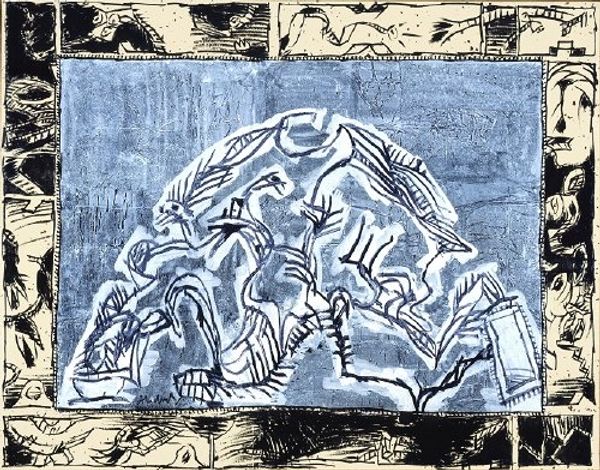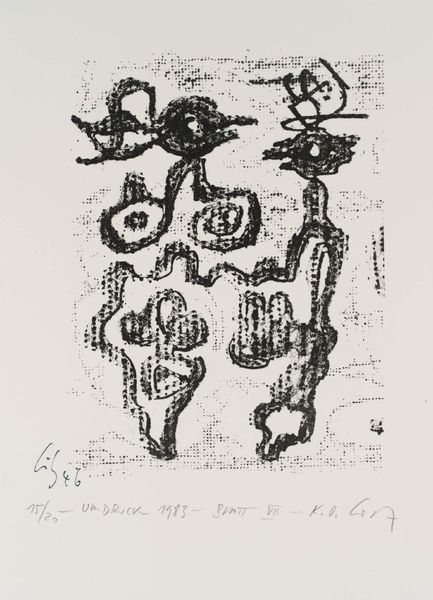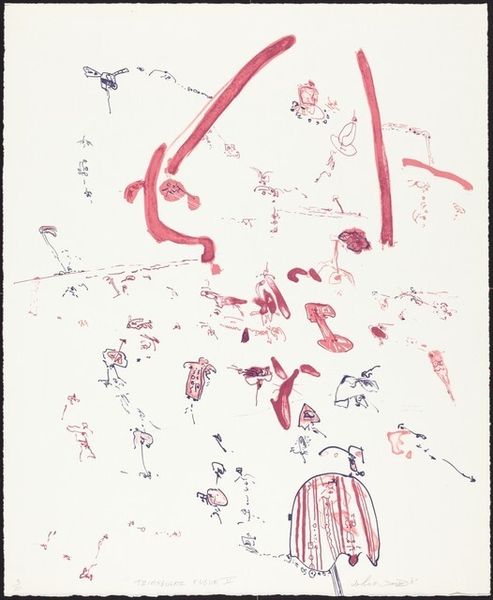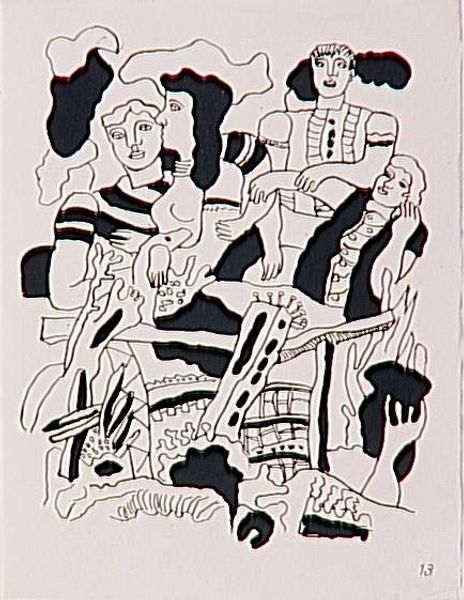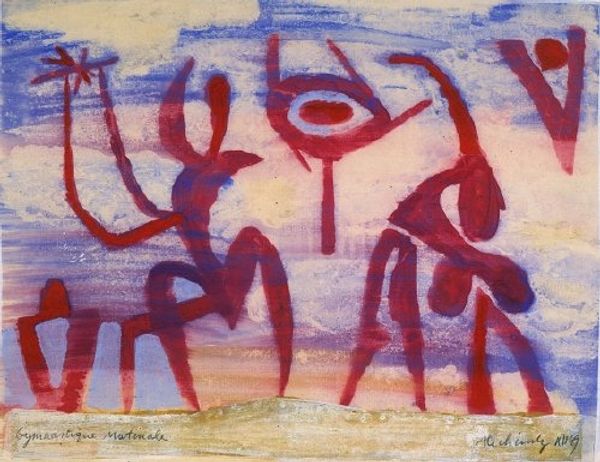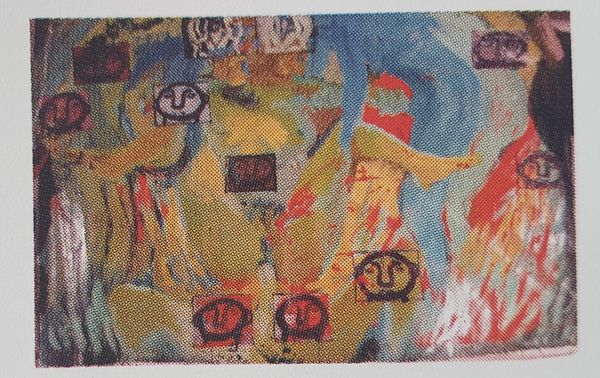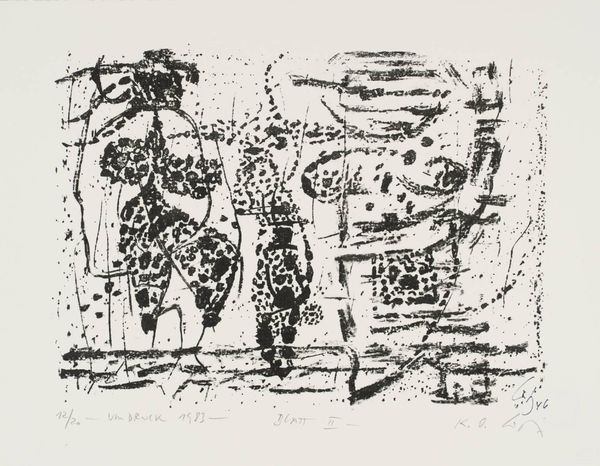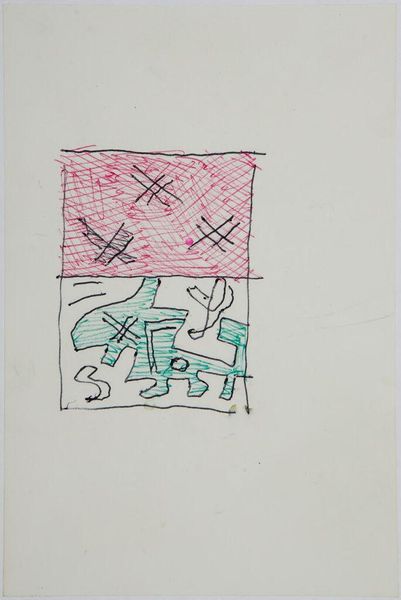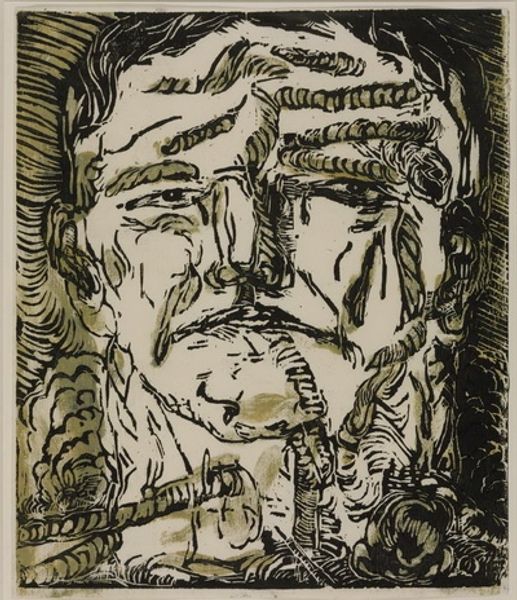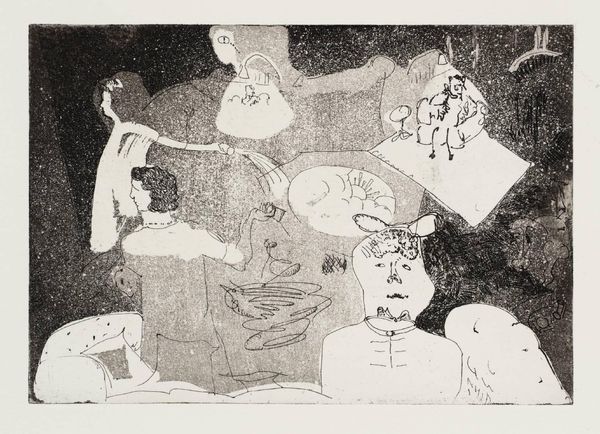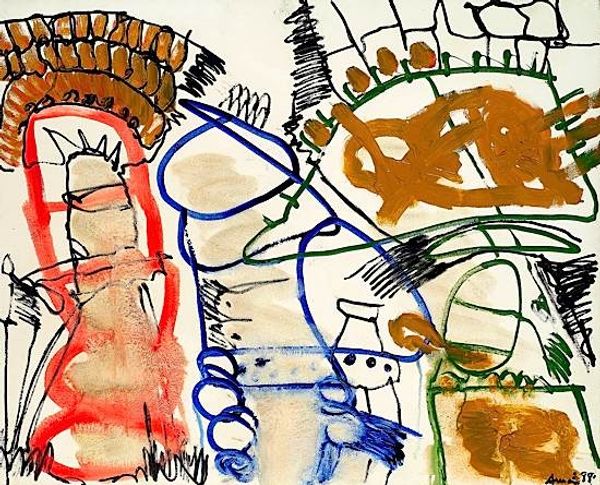
Copyright: Pierre Alechinsky,Fair Use
Editor: So, this is "Continued Articles" by Pierre Alechinsky, made in 1978, using ink and pen. The black lines create a sort of chaotic yet contained landscape. I am struck by the crude aesthetic. How would you interpret this work? Curator: Looking at Alechinsky’s "Continued Articles", it's important to consider the process behind its creation. This work isn't just about what it depicts, but how it's made and the material choices involved. Ink, a readily available and historically significant material, is used with an immediacy that subverts traditional drawing practices. How does that crude, almost haphazard use of such basic materials challenge notions of high art, do you think? Editor: I suppose it democratizes the process somehow. It feels like anyone could pick up a pen and try to replicate this. It shifts the focus away from skilled representation toward something else. Curator: Exactly. The act of drawing becomes almost performative, emphasizing the artist’s labor and interaction with the materials. The use of the pen allows us to consider Alechinsky's physical interaction with the surface, his gesture, and the speed with which he lays down the ink. Also, don’t forget Alechinsky's links to the Cobra group, who strongly advocated spontaneity and experimentation. Do you see echoes of that ethos here? Editor: Definitely. It's like he’s inviting us to witness the unedited flow of his subconscious. Seeing the raw quality makes it almost seem incomplete, but I guess that is part of the point, right? Curator: It challenges the preciousness often associated with art objects, placing value on the act of creation itself. That immediacy opens up an interesting perspective on the wider implications surrounding artistic production and its reception. It shows us the beauty and validity in what is created by common materials. Editor: That's really interesting. Thanks for helping me look beyond the surface. Curator: My pleasure. It's rewarding to consider how the materials and process can reveal so much about an artwork’s meaning.
Comments
No comments
Be the first to comment and join the conversation on the ultimate creative platform.

